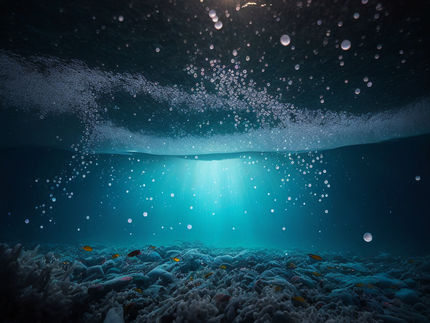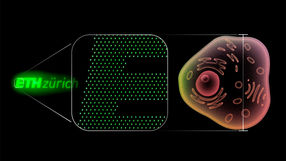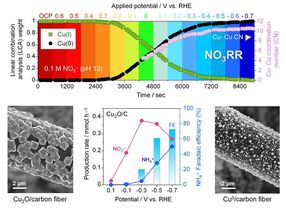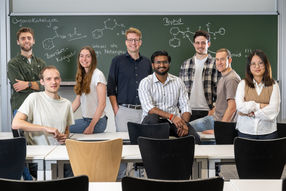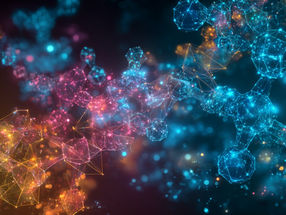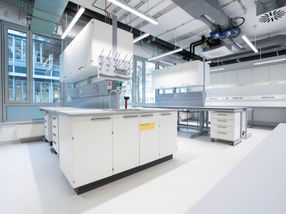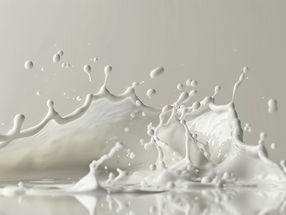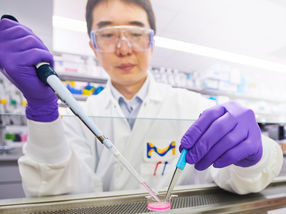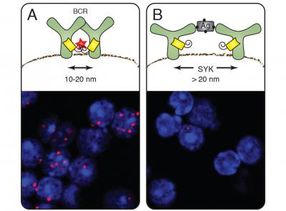How to detect the amount of microplastics in food
Focus on fish and seafood
Advertisement
How much microplastic is in the fish and seafood that ends up on our plates? The figures vary greatly. This is also due to the fact that food monitoring lacks standardized analysis methods to quantitatively detect the tiny plastic particles in fishery products. This makes it difficult to evaluate the results of different studies and it is often unclear how reliable the available data is. Scientists at the Max Rubner Institute have further developed methods from environmental analysis in order to make them usable for the analysis of microplastics in fish and seafood. A number of methodological challenges had to be overcome in the process.
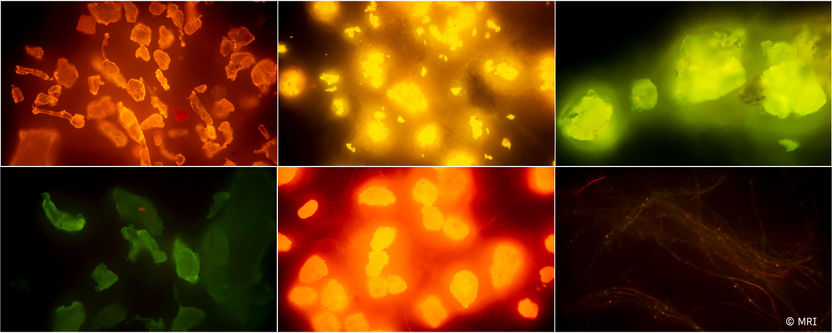
Fluorescence image with microplastics
Copyright: Max Rubner-Institut
In order to detect plastic in the edible tissue of fish and seafood, organic compounds such as carbohydrates, proteins and fats must be thoroughly removed. "This must not damage the tiny plastic particles," says Julia Süssmann, a scientist at the Max Rubner Institute and head of the research project. Süssmann and her team have developed a special method in which the samples are first treated enzymatically and chemically in order to dissolve the fish tissue. The plastic particles are then separated from the liquid using pressure filtration.
According to previous data, microplastics are found in fish and seafood in small quantities and very unevenly distributed. "That's why we need particularly sensitive detection methods," explains Süssmann. The total content of plastic in a sample can be determined using so-called mass-based methods. For example, the sample is heated in the absence of oxygen, causing it to decompose and form gaseous products. Their signals can then be used to calculate how much plastic was contained in the sample. This method can be used to detect a wide range of plastic types, such as polyethylene (PE) or polypropylene (PP).
The scientists also developed a process to selectively stain plastics. By adding a fluorescent dye, such as Nile red, small, colourless plastic particles, which are often difficult to detect using conventional light microscopy, can be made more visible. The fluorescence of natural particles, such as fragments of shrimp shells or bones, is suppressed with a second dye that only stains natural tissue. Using semi-automatic image analysis, microplastics can be reliably distinguished from natural particles, making it possible to characterize the quantity, size and shape of the plastic particles.
The fact that plastic objects can be found everywhere makes the work in the laboratory more difficult. Despite great care, plastic particles can get into the samples through measuring devices, protective clothing or the chemicals used. "We therefore took great care not to introduce plastic into the samples ourselves," says Süssmann. In addition, "blank samples" were examined in parallel with the food samples in order to be able to assess contamination.
The project also worked on detecting nanoplastics - i.e. even smaller particles than microplastics. However, separating such plastic particles from food was very difficult, even after chemical digestion. Nanoplastics clumped together and in some cases adhered to the pores of the membrane filter used. In addition, food components such as proteins or fats interfered with the plastic signals in the analyses. Reliable detection of nanoplastics in fish and seafood has not yet been possible.
The issue of microplastics is complex and there is still insufficient data on possible effects. "Microplastics are not a problem that is limited to fish and seafood," says Süssmann. "As part of our research, we have also found evidence of plastic particles in milk, meat, eggs and honey." According to the current state of knowledge, the Federal Institute for Risk Assessment considers it unlikely that microplastics in food pose a health risk to humans. However, further research, for example on the mode of action and absorption pathways, is still required to provide scientific certainty.
Note: This article has been translated using a computer system without human intervention. LUMITOS offers these automatic translations to present a wider range of current news. Since this article has been translated with automatic translation, it is possible that it contains errors in vocabulary, syntax or grammar. The original article in German can be found here.
Original publication
Julia Süssmann, Elke Kerstin Fischer, Lars Hildebrandt, Elke Walz, Ralf Greiner, Sascha Rohn, Jan Fritsche; "Nile red staining for rapid screening of plastic-suspect particles in edible seafood tissues"; Analytical and Bioanalytical Chemistry, Volume 416, 2024-5-10
Julia Süssmann, Elke Walz, Birgit Hetzer, Ralf Greiner, Elke Kerstin Fischer, Sascha Rohn, Jan Fritsche; "Pressure-assisted isolation of micro- and nanoplastics from food of animal origin with special emphasis on seafood"; Journal of Consumer Protection and Food Safety, Volume 20, 2025-2-8
Julia Süssmann, Torsten Krause, Elke Kerstin Fischer, Elke Walz, Ralf Greiner, Sascha Rohn, Jan Fritsche; "Microplastics in fresh and processed seafood – A survey of products sold in Germany"; Food Control, Volume 179
Other news from the department science
Most read news
More news from our other portals
See the theme worlds for related content
Topic World Food Analytics
Food analysis methods enable us to investigate the quality, safety and composition of our food. Whether in the traceability of food, the detection of contaminants or the verification of nutritional information - food analytics plays a crucial role in our health and nutrition. Welcome to the exciting world of food analytics!

Topic World Food Analytics
Food analysis methods enable us to investigate the quality, safety and composition of our food. Whether in the traceability of food, the detection of contaminants or the verification of nutritional information - food analytics plays a crucial role in our health and nutrition. Welcome to the exciting world of food analytics!




